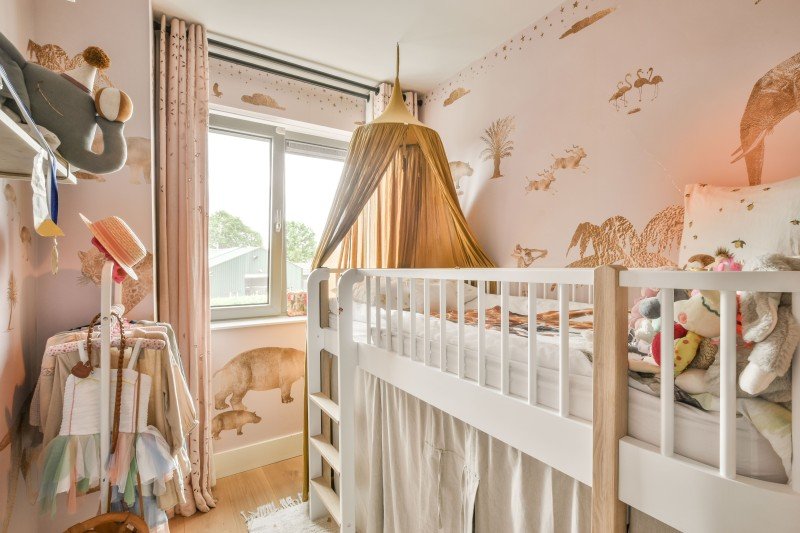The Ultimate Guide to Bunk Beds for Children: Safety, Styles, and Benefits
When it pertains to styling a kid's room, moms and dads often deal with the double challenge of making the most of space while guaranteeing comfort and functionality. Bunk beds have actually emerged as a popular solution that attends to these needs, using not just sleeping plans but also contributing to a space's visual. In this comprehensive guide, we will explore different elements of children's bunk beds, focusing on their advantages, security functions, designs, and considerations for moms and dads considering this purchase.
Table of Contents
- Advantages of Bunk Beds
- Security Features to Consider
- Types of Bunk Beds
- Style and Style Options
- Maintenance Tips
- Frequently Asked Questions (FAQs)
1. Benefits of Bunk Beds
Bunk beds use various advantages for kids and their parents. Here are some crucial benefits:
- Space-Efficiency: Bunk beds are an excellent option for smaller spaces. By stacking one bed on top of another, more floor space is offered for play, storage, or research study areas.
- Cost-efficient: When kids share spaces, bunk beds can reduce the need for purchasing two separate beds, thus saving money.
- Promotes Social Interaction: Bunk beds can assist siblings or buddies bond by sharing a space, developing chances for social development.
- Fun Factor: The idea of sleeping "up high" includes a playful aspect to bedtime, making the transition to sleeping alone simpler for some children.
- Versatile Design: Bunk beds can be found in various designs, colors, and develops to match any space theme, enabling for modification that reflects the kid's personality.
2. Security Features to Consider
Safety is critical when it concerns children's furniture, especially in the case of bunk beds. Here are some critical security features to examine:
| Safety Feature | Description |
|---|---|
| Durable Construction | Frames made from strong wood or metal are chosen. |
| Guardrails | Must be at least 5 inches high and extend along both sides of the upper bunk. |
| Ladder Design | Guarantee ladders are firmly attached and have non-slip steps. |
| Mattress Size & & Fit | Should fit comfortably within the frame to avoid spaces. |
| Weight Limit | Constantly comply with the producer's weight limitation suggestions. |
3. Kinds Of Bunk Beds
Bunk beds can be found in numerous designs, dealing with numerous needs, preferences, and space sizes. Here are some typical types:
- Standard Bunk Bed: The a lot of basic type, with one bed on top of another.
- Loft Bed: Features a high upper bed with space below for a desk or play area.
- Futon Bunk Bed: Combines a top bunk with a futon on the bottom, offering flexibility for seating and sleeping.
- L-Shaped Bunk Bed: This style has the top bunk set at a perpendicular angle to the bottom, developing a little corner location.
- Triple Bunk Bed: Accommodates 3 children using stacked beds, perfect for big households or pajama parties.
4. Style and Style Options
When it comes to selecting a style for children's bunk beds, the alternatives are practically endless. Here are some popular designs:
- Traditional Style: Often made from wood, these bunk beds include ornate information and are best for classic or rustic-themed spaces.
- Modern Style: Characterized by tidy lines and minimalist styles, contemporary bunk beds can be made of metal or wood.
- Themed Bunk Beds: Some brand names offer bunk beds shaped like castles, cars, or play houses, making bedtime less of a task.
- Convertible Bunk Beds: These can be separated into two individual beds, offering flexibility as children grow.
- Colorful Options: Bunk beds in lively colors can add a sense of joy and playfulness to any space.
5. Upkeep Tips
Keeping a bunk bed is essential for longevity and security. Here are some ideas:
- Regular Inspections: Check for loose screws or bolts every few months and tighten them as required.
- Cleaning up: Wipe down frames frequently to prevent dust build-up; consider utilizing a vacuum for hard-to-reach areas.
- Bed mattress Care: Rotate mattresses routinely and use protective covers to prolong their life.
- Look for Wear and Tear: Look for any indications of damage in the wood or metal and think about changing parts if essential.
- Teach Kids Safety Rules: Encourage children to use ladders appropriately and ensure they understand the security functions of their bed.
6. Regularly Asked Questions (FAQs)
Q1: What age is appropriate for oversleeping a top bunk?
A1: Typically, children aged 6 and older are advised for upper bunk sleeping, as they have the needed motor skills to climb up safely.
Q2: Do bunk beds come with a bed mattress?
A2: Most bunk beds are offered as frames just, so you will require to purchase bed mattress separately. Ensure that the bed mattress fits the frame snugly.
Q3: Can bunk beds be separated later on?
A3: Many styles enable conversion into 2 specific beds, offering flexibility for future needs.
Q4: How can I ensure my kid's security on a bunk bed?
A4: Comply with security standards and ensure guardrails, a sturdy frame, and a secured ladder remain in location.
Q5: Are there weight limitations on bunk beds?
A5: Yes, constantly inspect the manufacturer's requirements regarding weight limits to guarantee safety.
Bunk beds for children can serve multiple functions while guaranteeing security and design. With diverse styles and models offered on the market, moms and dads can discover a system that not just optimizes bedroom space but likewise reflects their child's distinct tastes. Just like herminegarness.top , comprehending safety features, maintenance, and how they fit into a child's lifestyle will make sure that these beds stay a useful furnishings option for many years to come.
Through mindful factor to consider and adherence to safety guidelines, bunk beds can offer a lasting, enjoyable, and functional sleeping service that children like.

